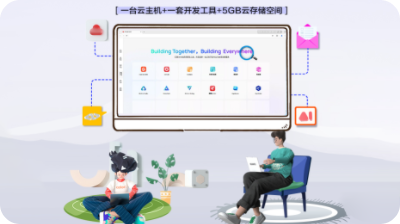Java 发送http GET/POST请求
【摘要】 HttpURLConnection是一种多用途、轻量极的HTTP客户端,使用它来进行HTTP操作可以适用于大多数的应用程序。
HttpURLConnection是Java的标准类,它继承自URLConnection,可用于向指定网站发送GET请求、POST请求。
最近项目里面需要用到Java发送http请求,由于发送https请求有点复杂,暂时不考虑
HttpURLConnection
HttpURLConnection是一种多用途、轻量极的HTTP客户端,使用它来进行HTTP操作可以适用于大多数的应用程序。
HttpURLConnection是Java的标准类,它继承自URLConnection,可用于向指定网站发送GET请求、POST请求。它在URLConnection的基础上提供了如下便捷的方法:
int getResponseCode(); // 获取服务器的响应代码。 String getResponseMessage(); // 获取服务器的响应消息。 String getResponseMethod(); // 获取发送请求的方法。 void setRequestMethod(String method); // 设置发送请求的方法。
如何使用
HTTP请求方法有8种,分别是GET、POST、DELETE、PUT、HEAD、TRACE、CONNECT 、OPTIONS。其中PUT、DELETE、POST、GET分别对应着增删改查。
GET:请求获取Request-URI所标识的资源 POST:在Request-URI所标识的资源后附加新的数据 HEAD:请求获取由Request-URI所标识的资源的响应消息报头 PUT: 请求服务器存储一个资源,并用Request-URI作为其标识 DELETE :请求服务器删除Request-URI所标识的资源 TRACE : 请求服务器回送收到的请求信息,主要用于测试或诊断 CONNECT: HTTP/1.1协议中预留给能够将连接改为管道方式的代理服务器。 OPTIONS :请求查询服务器的性能,或者查询与资源相关的选项和需求
返回的数据格式化json 用的是 com.google.gson.*;
开始
(1)包
import com.google.gson.*; import java.io.*; import java.net.*;
(2)发送GET请求
public static JsonObject getRequest(String requestUrl) {
String res = "";
JsonObject object = null;
StringBuffer buffer = new StringBuffer();
try {
URL url = new URL(requestUrl);
HttpURLConnection urlCon = (HttpURLConnection) url.openConnection();
System.out.println(urlCon.getResponseCode());
if (200 == urlCon.getResponseCode()) {
InputStream is = urlCon.getInputStream();
InputStreamReader isr = new InputStreamReader(is, "utf-8");
BufferedReader br = new BufferedReader(isr);
String str = null;
while ((str = br.readLine()) != null) {
buffer.append(str);
}
br.close();
isr.close();
is.close();
res = buffer.toString();
JsonParser parse = new JsonParser();
object = (JsonObject) parse.parse(res);
} else {
throw new Exception("连接失败");
}
} catch (Exception e) {
e.printStackTrace();
}
return object;
}(3)发送POST请求
public static JsonObject postRequest(String path, String post) {
URL url = null;
try {
url = new URL(path);
HttpURLConnection httpURLConnection = (HttpURLConnection) url.openConnection();
// 提交模式
httpURLConnection.setRequestMethod("POST");
//连接超时 单位毫秒
httpURLConnection.setConnectTimeout(10000);
//读取超时 单位毫秒
httpURLConnection.setReadTimeout(2000);
// 发送POST请求必须设置如下两行
httpURLConnection.setDoOutput(true);
httpURLConnection.setDoInput(true);
// 获取URLConnection对象对应的输出流
PrintWriter printWriter = new PrintWriter(httpURLConnection.getOutputStream());
// 发送请求参数
//post的参数 xx=xx&yy=yy
printWriter.write(post);
// flush输出流的缓冲
printWriter.flush();
//开始获取数据
BufferedInputStream bis = new BufferedInputStream(httpURLConnection.getInputStream());
ByteArrayOutputStream bos = new ByteArrayOutputStream();
int len;
byte[] arr = new byte[1024];
while ((len = bis.read(arr)) != -1) {
bos.write(arr, 0, len);
bos.flush();
}
bos.close();
JsonParser parse = new JsonParser();
return (JsonObject) parse.parse(bos.toString("utf-8"));
} catch (Exception e) {
e.printStackTrace();
}
return null;
}如果需要用到登录情况,可以先发送登录请求保存cookie,第二次发送就可以请求了
(4)保存cookie
通过这两行代码就可以把网站返回的cookie信息存储起来,下次访问网站的时候,自动帮你把cookie信息带上。
//存储cookie CookieManager cookieManager = new CookieManager(); CookieHandler.setDefault(cookieManager);
通过返回的json获取值(子节点)
JsonElement cookie = res.get("data").getAsJsonObject().get("cookie");超时无响应问题设置
//连接超时 单位毫秒 httpURLConnection.setConnectTimeout(10000); //读取超时 单位毫秒 httpURLConnection.setReadTimeout(2000);
【声明】本内容来自华为云开发者社区博主,不代表华为云及华为云开发者社区的观点和立场。转载时必须标注文章的来源(华为云社区)、文章链接、文章作者等基本信息,否则作者和本社区有权追究责任。如果您发现本社区中有涉嫌抄袭的内容,欢迎发送邮件进行举报,并提供相关证据,一经查实,本社区将立刻删除涉嫌侵权内容,举报邮箱:
cloudbbs@huaweicloud.com
- 点赞
- 收藏
- 关注作者


评论(0)